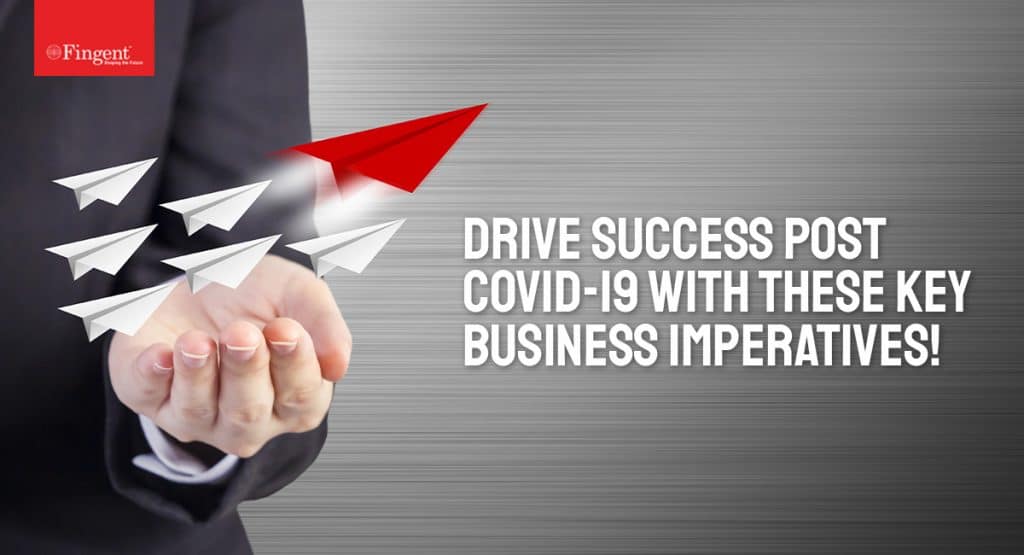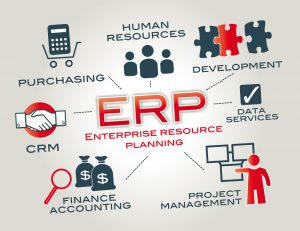Tag: Innovation
“Innovation is critical to the future well-being of society and to driving economic growth.”
Prior to the COVID-19 outbreak, several organizations were reluctant to consider digital innovation as a cornerstone of their business strategy. A sea of overnight changes forced them to try and implement a digital-first strategy, without even knowing how they can effectively choose and adopt digital tools. Data shows that 94% of executives are unhappy with their firms’ innovation performance, despite spending heavily on incubators, accelerators, and internal venture capital. These businesses are unable to create any impact because their efforts are stifled by some of the biggest barriers to innovation, such as lack of organizational support, inability to foresee the long-term rewards offered by customized solutions, and poor process and data management, among others.
In this post, we’ll briefly examine five major innovation hurdles faced by business leaders today and how these challenges can be busted.
Read more: Top 5 Organizational Imperatives for Business Leaders to Become Winners in the New Normal
1. Organizational Resistance
True digital innovation embraces an organization’s leadership, work culture, technology, and business practices. Many business leaders struggle with digital innovation because it appears to oppose their established ways of working, which they have been practicing for decades. It’s hard to get innovation right within a rigid organizational structure where mistakes cannot be tolerated. At the same time, every organization cannot afford to engage in costly and time-consuming experiments that will intervene their daily show.
Overcome Resistance Through Outsourcing
By strategically outsourcing innovation, business leaders can reduce the experimental cycle times and lower the associated risks and costs. Consider the insurance law industry that processes massive amounts of legal documents and insurance data on a daily basis. A typical employee compensation claim would take nearly three years for final settlement, after all the paper sifting, consulting, probing, and finalization. The average case settlement time costs a carrier close to $85k. Sapra & Navarra, a leading Californian attorney wanted to put an end to this enigma. They outsourced their technology requirements and developed an AI and Machine Learning program that enhanced and accelerated the activities involved in processing workers’ compensation claims.
The result: 50% decrease in average total claim costs, claim cycle time, and associated personnel costs.
Outsourcing your digital innovation project gives you access to top-rated specialists in various technologies such as AR, VR, IoT, automation, blockchain, mobility, enterprise content management, data analytics, and business intelligence. Outsourcing saves your cost and time and makes your business scalable for future needs.
2. Disorganized Innovation Process
Several organizations fail to formulate a process to guide sustainable innovation. Companies rely on serendipity instead of formally analyzing their strengths and weaknesses around innovation, thereby failing to understand and define their expectations. This prevents business leaders from broaching innovation as an enterprise-wide responsibility. Innovation thrives in an open and supportive environment where employees are assured of recognition and professional growth.
Ways To Adopt A Systematic Innovation Process
Business leaders and managers can assist with the process of innovation by:
- Understanding the operational details of innovation projects and keeping a close eye on the project performance.
- Establishing a learning-focused environment that encourages employees to speak up and try new ideas.
- Ensuring the selected ideas are well-evaluated and are based on their organization’s protocols.
- Responding to opinions and queries and motivating employees to ask the right questions.
- Paying rapt attention to customers’ needs and specifications and utilizing technology creatively to lessen their woes.
To put it simply, a systematic innovation process should have three components: a worthy problem to solve, a technology that helps develop the solution, and a business model that generates ROI from it.
Read more: Prepare For The Future of Digital Innovation with Fingent
3. The Rift Between B2B And B2C Tech
Just like how B2C customers rely on Amazon to buy their household essentials, B2B customers are also switching to digital tools for researching and buying products. Several factors, such as decision-makers, influencers, higher price points, competing sales channels, and a growing range of product lines and specifications come in the way of B2B purchasing decisions. This has caught B2B sellers in a maze of innovation challenges. More than anything else, B2B companies need to become more customer-centric to stay ahead of the competition.
How B2B Companies Can Apply Innovation
- Have a solid omnichannel strategy, with a specific focus on improving mobility. This will put better tools in the hands of B2B sales teams.
- Evolve from legacy organizational structures. The leadership should bring more clarity to digital roles and define the ownership of digital initiatives.
- Outsource digital capability building requirements to a trusted offshore software vendor. Migrate to the latest technologies like the cloud and update your legacy enterprise software to drive your innovation efforts.
Read more: Cloud Migration – Essentials to Know Before Jumping the Bandwagon
4. Too Much Focus On Short Term Gains
Building the gap between digital innovation leaders and laggards is a time-consuming endeavor, which can pay off in the long term when done rightly. Several enterprises go for ready-made, canned technology solutions in a race to become digital. Such businesses tend to lose out big as they fail to prioritize the long-term gains such as scalability and adaptability that are more crucial in their growth journey. Custom software, that is purpose-built for your business, is the best digital innovation solution that can stabilize and scale your business growth.
Reaping Long Term Rewards With Custom Software
With a solution tailored to your industry’s requirements, it becomes easy to integrate software into your organization’s daily routine. Off-the-shelf software meets only 60% of your operational business needs.
Our customers reveal the long-term benefits of adopting custom software:
- 93% of our clients saw a decline in inefficient tasks after implementing custom software
- 91% agree that tailored software solutions have increased their productivity
- 77% could reduce manual data entry errors after replacing their off-the-shelf software with custom applications
- 76% of our clients reported increased ROI
Read more: Ensuring small business success with custom software
5. Innovation Has To Be Managed Only By C-Level Execs
More than technology, the success of the digital transformation is determined by the attitude of people across the organization. According to Harvard Business Review, “when leaders think about investing in technology, they should first think about investing in the people who can make that technology useful.” This is where the main implication lies. Digital innovation success depends on your ability to adapt to the changes rather than the technology itself.
Driving Innovation Forward
In these times of change, it’s important to count diverse perspectives, talents, thoughts, and ideas to drive innovation forward. Business leaders should invest in raising new skills, think cloud and mobile-first, build personalized experiences using data, and tie all the digital channels to offer customers a unified experience.
Read more: Future-proof your business with 5G, Edge Computing, and Cloud
Start Your Digital Innovation Journey With Fingent!
Have you started your digital transformation journey yet? If not, there’s no better time than now. We’re helping businesses build robust custom solutions that can sustain their innovation model and boost their customer experience even in the wake of a black swan event. The way each business looks at innovation could be different, but what ultimately matters is how your innovation model integrates with your business strategy, long-term growth plans, team culture, ROI, budgeting, market value, and above all the impact on your customer. Are you ready to take a free assessment?
Drop us a line and our sales team will contact you shortly.
Stay up to date on what's new

Featured Blogs
Stay up to date on
what's new



Talk To Our Experts
In this era of rapid digital transformation, new technologies have opened up opportunities and created challenges, fundamentally transforming customer experiences, operating models and the work environment.
While the scope, scale, and complexity of business technology has evolved at an exponential rate, sophisticated technology has also become more accessible to a wider audience. Such accessibility enables a thriving digital culture which can be a source of competitive advantages across all business functions – recruiting, training, sales, sourcing, manufacturing, logistics, marketing and more. While in the past, technology providers (like us at Fingent) predominantly worked with IT departments, today we often work with functions like finance, sourcing, HR, project management and logistics, with minimal or no involvement of the customer’s IT team.
More importantly, access to robust technology is also no longer exclusive to large enterprises. Commoditization, outsourcing, and good connectivity have driven down costs, making technology accessible to businesses of all sizes, across the globe.
By providing an attractive basis for innovation, improving cost efficiency and differentiation, the synergy between technology and business processes is no longer optional, but a must-have.
Studies reveal that 55% of startups have already adopted a digital business strategy compared to 38% of traditional enterprises.
While the specific technologies that can be leveraged for business growth, will vary widely across organizations, there are a few common themes that business leaders can consider.
The Cloud democratizes Information Technology
Cloud computing is really the internet as we use it today. Dropbox, One Drive, Facebook, INFINCE, AirBnB, Twitter, Uber…. Are all in the cloud. It is really an umbrella term that covers a variety of on-demand computing and storage services as IaaS (Infrastructure as a Service), PaaS (Platform as a Service) or SaaS (Software as a Service).
Related Reading: Choose the right Cloud service model for your Business
Cloud technologies help discard or avoid the need for physical IT infrastructure, and on-premise support structures for computing capabilities, by virtualizing these across server farms or data centers. Using cloud-based services providers, businesses can leverage IT assets as programmable resources, which are global and scalable on demand. This allows a business to access or lease computing resources and storage power far greater than what it may have been able to access on local infrastructure, while still being able to scale up or down in a cost-efficient manner.
Consider V Locker, an Australian firm providing automated locker solutions for freight deliveries. V Locker manages lockers for B2B customers across the globe from Australia, using IaaS (Infrastructure as a Service) and PaaS (Platform as a Service).
On the cloud, multi-tenancy enables effective resource utilization, reducing costs to make the cloud a cost-efficient option for most organizations. For e.g. SaaS (Software as a Service) Property Management service Simple Rent uses multi-tenancy to provide a low-cost, high quality offering to the commercial and residential rental business.
While the Enterprise IT spend on the cloud is relatively small, it is the fastest growing segment, slowly replacing on-premise systems. At one end of the spectrum, Oracle and Microsoft are slowly shifting legacy products to the cloud, pushing many large enterprises to follow suite. At the other end, solutions like Infince have taken enterprise cloud a step ahead by blending SaaS and IaaS for small/medium sized businesses, providing a cost-efficient, secure cloud-based alternative to expensive alternatives. The cloud makes robust enterprise technology accessible globally to businesses of all sizes without the need to invest in expensive infrastructure or large teams.
Data – Big, Small and everything in between
With the relentless digitization of business and society, we have access to extraordinarily large amounts of data. Transactional data (from digitized business processes via ERP, CRM, HRMS, POS, and similar systems), Social data (Facebook, LinkedIn, YouTube, Twitter and the like) and Operational data (from connected devices and IoT systems) can be leveraged to provide better customer experiences and improve operational efficiency. The key is not just to gather data, but to leverage it with analysis and insight. From an organizational perspective, this can require experts from multiple disciplines to work together to peel back multiple layers of data and insight.
Related Reading: Find out how Big Data is changing the Healthcare sector.
Success depends not on the indiscriminate application of technology to data, but on a coherent approach, of identifying critical data that matter, and using the right technology to generate relevant and actionable insights, delivered to key stakeholders in the value chain, in real time.
In the realm of marketing, successful big data analytics manifest as tracking everything a customer or prospect does and generating real-time alerts to the marketer or a front line executive dealing with the customer. For instance, if the customer walks into a store, the automated analytic solution alerts the sales executive immediately, and everything related to the customer, including their preferences, purchase history, and more, surfaces to the executive’s tablet. Likewise, if a prospects click on an ad or downloads an app, the marketer gets an alert immediately, enabling them to engage the customer proactively, to close the deal or move the prospect up the lifecycle.
From Digitization to Digitalization to Digital Transformation
Digitization is the conversion of analog physical objects into digital goods. Paper to PDF or Doc, or physical cash digitized to mobile payments, physical signatures to electronic signatures – these are all digital manifestations of non-digital objects. Digital goods have low marginal costs, are non rival, and can easily be bundled with other digital or non-digital products. Consider online user manuals, learning management systems. Usually the first step in an organization’s technology journey, Digitization sets the foundation to enable Digitalization and Digital Transformation.
“Digitization and digitalization are two conceptual terms that are closely associated and often used interchangeably in a broad range of literature. There is analytical value in explicitly making a clear distinction between these two terms.” – Scott Brennen and Daniel Kreiss
Digitalization is about leveraging technology to create, enable or transform a business process- usually leading to one or more of- the discovery or new opportunities, reduced risks or efficiency gains. For example, field service management solutions like ReachOutSuite help deploy digital forms to field technicians across various locations. It reduces the risks of revenue loss due to errors, inefficient scheduling and underprepared staff. This service also increases efficiency by maximizing staff utilization and getting more jobs done pre-staff. It further enables the identification of new opportunities by enabling techs and backend admins to understand customer experience better. Digitalization of business processes is par for the course these days with a plethora of packaged and custom built software available for enterprise planning, managing business finances, training, projects, customer management, and human resources.
Find how ReachOutSuite can make a work order manager’s life simpler.
- CRM systems coordinate business processes that are key to generating leads, converting them into prospects, and, subsequently, into regular customers. Additionally, CRM software solutions supply business managers with data processing and analytic tools to help refine marketing strategies, improve customer service and track overall organizational performance. Through centralization of business data, CRM software tools streamline the decision-making process and automate repetitive tasks.
- Project management software eliminates laborious paperwork and tedious planning processes. With the right tools, businesses can control projects costs and improve the efficiency of related operations. Technology automates most project management processes to make it affordable and practical for any type of business. The main benefits of implementing project management software include – Easier project planning, monitoring and tracking, Improved collaboration, Better organization, and future planning
- ERP systems boost productivity and promote business growth in two primary ways. First is automating business processes to improve accuracy and save time for all employees. Second, ERP systems unify data generated by the business and make it available to decision-makers and other managerial parties throughout th
e firm. It eliminates data sharing problems among departments and makes the information accessible to everyone.
Digital transformation is about leveraging digitization and digitalization to transform a business unit’s or an organization’s approach to business. This can involve one or more of – new business models, overhauling customer experience, radically different manner of service or product delivery. The transformation is driven by the business, and not by the IT team. For instance, consider Replika, which connects brick and mortar sales to the digital realm, transforming the way sales is managed for retail. Emerging technologies will create new business models that may be hard to understand or foresee today. For instance, digital securities based on blockchain based technologies can unbundle ownership of analog assets like property or gems, while making it possible to bundle diverse asset classes to create new portfolios for investment. Such digitization of previously illiquid assets creates new customers, new strategies and new business models that may not be possible to fully comprehend today.
Related Reading: Find out how INFINCE is the ultimate digital transformation for small business of today.
In conclusion
Technology is a disruptive force. In the current ever-changing and multifaceted business environment, technology can not only help improve your businesses’ agility but can also provide cost-effective means to innovate your products and services, improving customer experience. The key is to adopt the right tools and partners, while actively planning the change and deployment.
Stay up to date on what's new

Featured Blogs
Stay up to date on
what's new

























































